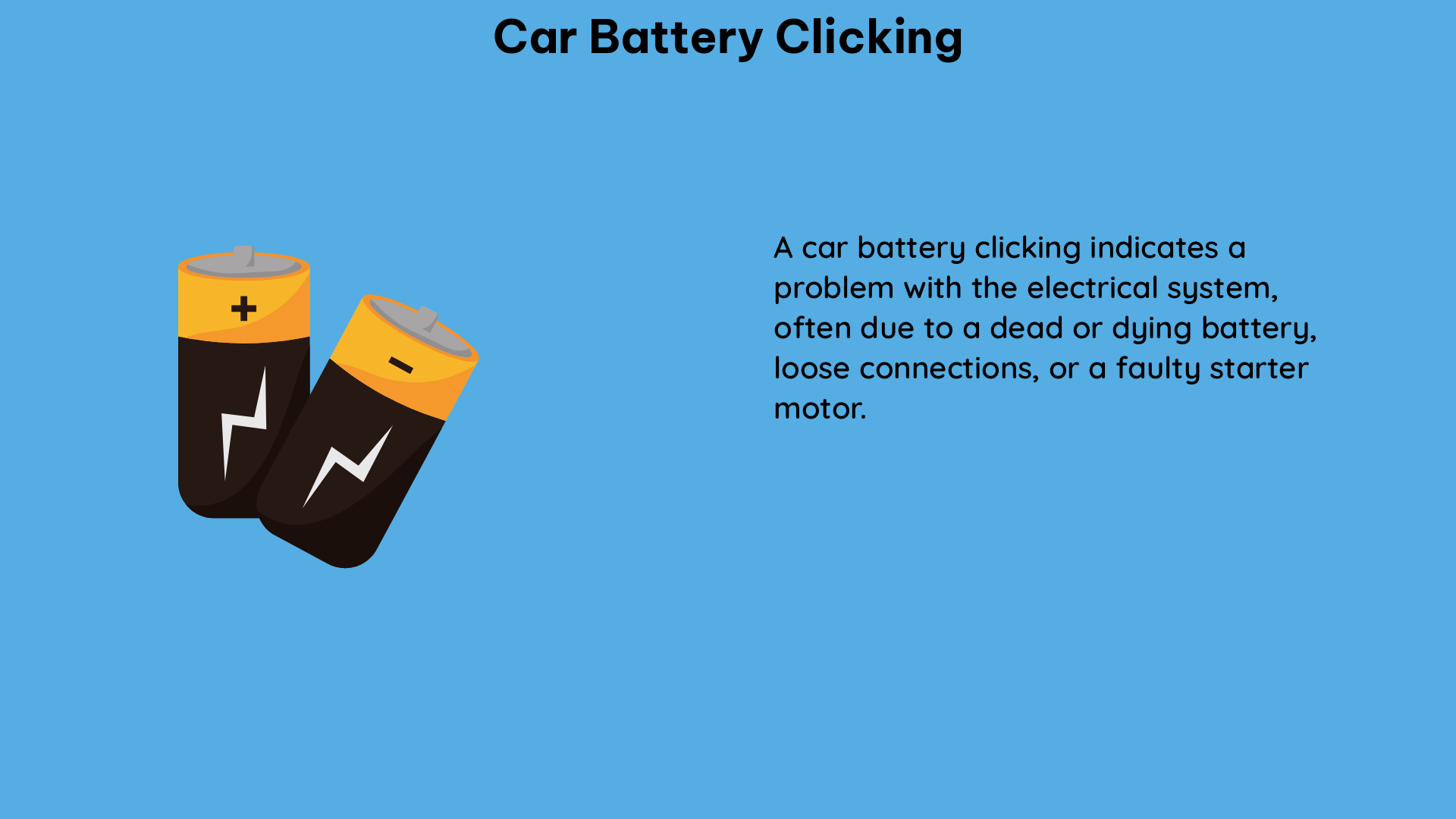When a car battery starts clicking, it’s a clear sign that there’s an issue with the battery or the surrounding components. To diagnose and address this problem, it’s essential to understand the underlying causes, technical specifications, and DIY repair procedures. This article provides measurable, quantifiable data on car battery clicking, along with a comprehensive guide to troubleshoot and resolve the issue.
Understanding Car Battery Clicking
Car battery clicking is often caused by a dead battery, loose or corroded connections, or a faulty starter motor. The clicking sound is the result of the starter solenoid trying to engage the starter motor but failing due to insufficient power from the battery or poor connections.
Technical Specifications of Car Battery Clicking

To diagnose and address car battery clicking, it’s essential to understand the technical specifications of the components involved:
Battery Voltage
- A healthy 12-volt battery should measure around 12.6 volts when the engine is off.
- When the engine is running, the voltage should increase to 13.5-14.5 volts, indicating that the alternator is charging the battery properly.
- If the battery voltage is below 12 volts, it may be dead or severely drained and require charging or replacement.
Starter Solenoid Current
- The starter solenoid requires a high current (up to 200 amps) to engage the starter motor.
- If the battery or connections cannot supply this current, the solenoid will click but fail to engage the starter motor.
Starter Motor Current
- The starter motor draws a significant current (up to 100 amps) to crank the engine.
- If the starter motor is faulty or has a dead spot, it may not be able to turn the engine, resulting in a single click from the starter solenoid.
DIY Guide to Addressing Car Battery Clicking
To diagnose and address car battery clicking, follow these steps:
- Check the Battery Voltage:
- Use a multimeter to measure the battery voltage.
-
If the voltage is below 12 volts, the battery may be dead or severely drained and require charging or replacement.
-
Inspect the Connections:
- Check the battery terminals and connections for corrosion, dirt, or loose connections.
- Clean the terminals and connections using a wire brush or baking soda and water solution.
-
Tighten the connections as necessary.
-
Test the Starter Solenoid:
- Use a multimeter to check the starter solenoid for continuity.
-
If there’s no continuity, the solenoid may be faulty and require replacement.
-
Test the Starter Motor:
- Use a multimeter to check the starter motor for continuity.
- If there’s no continuity, the starter motor may be faulty and require replacement.
By following these steps, you can accurately diagnose and address car battery clicking issues, ensuring your vehicle starts reliably and preventing potential damage to the starter motor or other components.
References:
- Reddit: Fast clicking when trying to start
- Mechanics Stack Exchange: Clicking sound when trying to start
- Mechanics Stack Exchange: Clicking noise when the battery is turned on

The lambdageeks.com Core SME Team is a group of experienced subject matter experts from diverse scientific and technical fields including Physics, Chemistry, Technology,Electronics & Electrical Engineering, Automotive, Mechanical Engineering. Our team collaborates to create high-quality, well-researched articles on a wide range of science and technology topics for the lambdageeks.com website.
All Our Senior SME are having more than 7 Years of experience in the respective fields . They are either Working Industry Professionals or assocaited With different Universities. Refer Our Authors Page to get to know About our Core SMEs.